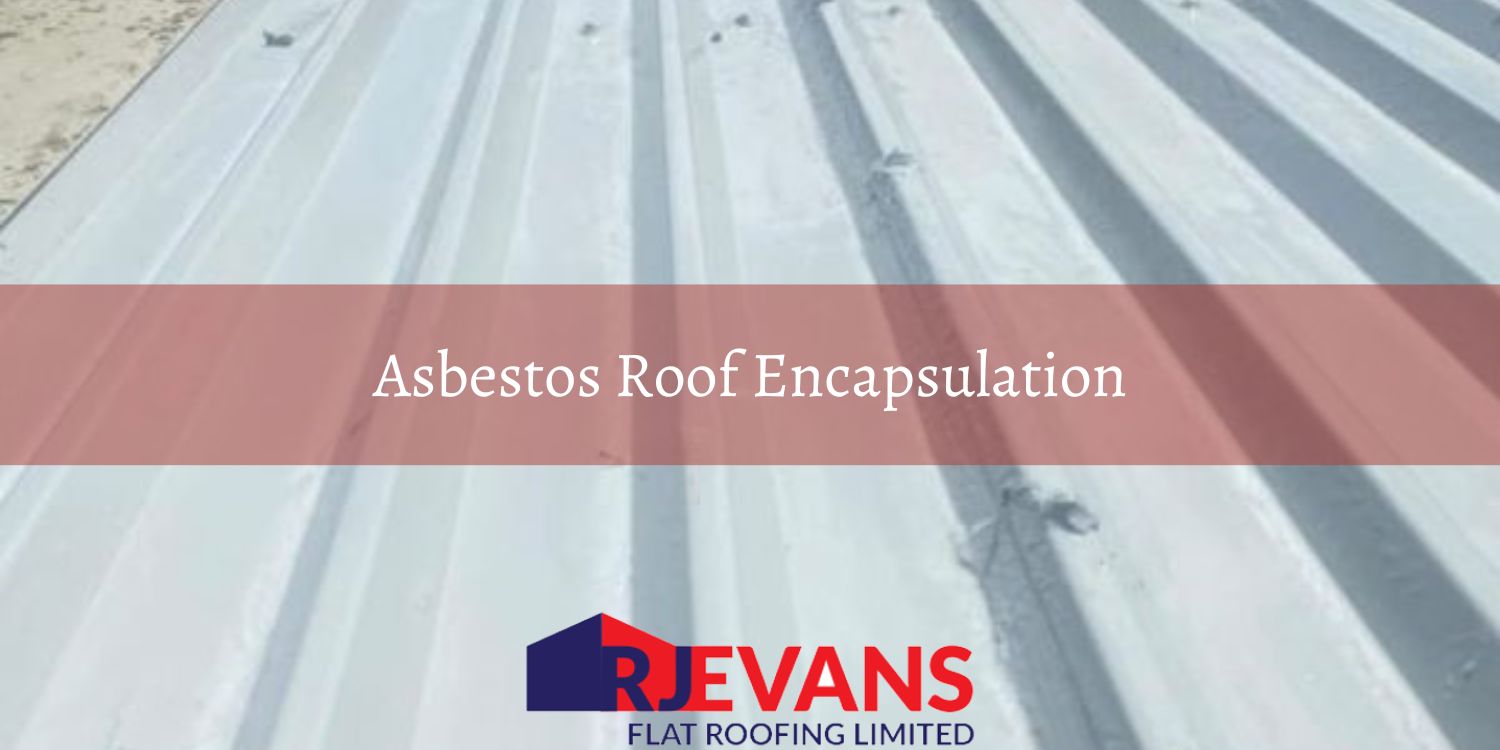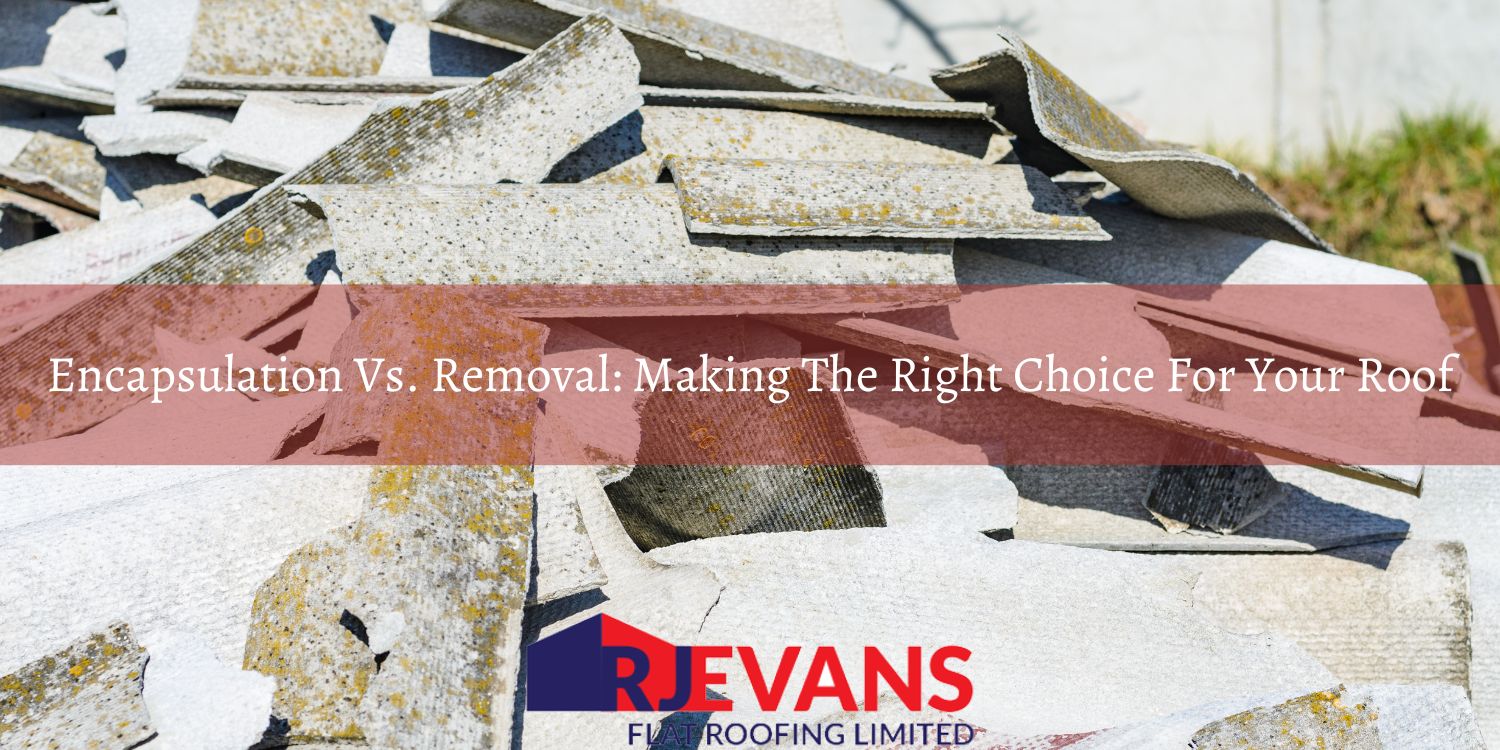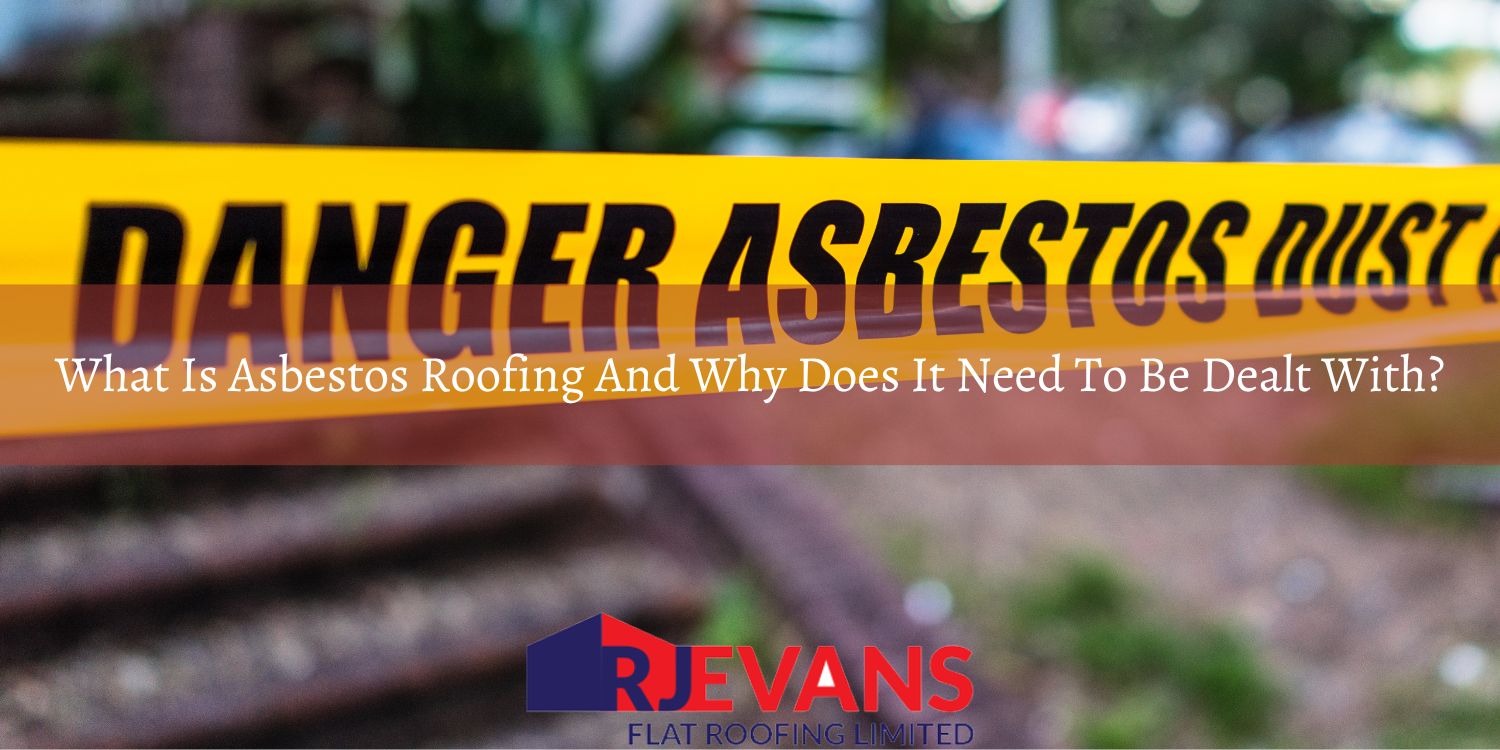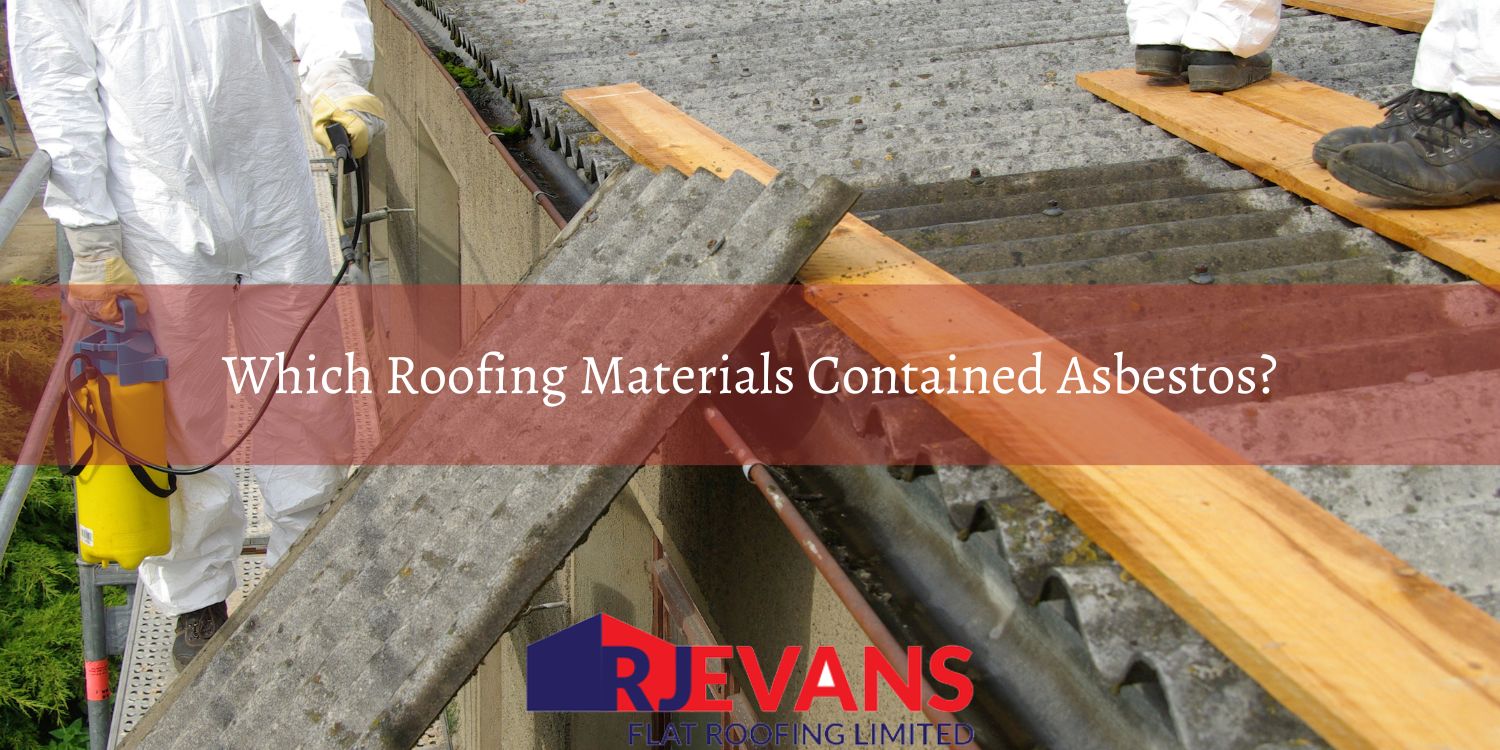I agree Our site saves small pieces of text information (cookies) on your device in order to deliver better content and for statistical purposes. You can disable the usage of cookies by changing the settings of your browser. By browsing our website without changing the browser settings you grant us permission to store that information on your device.

Asbestos roof encapsulation, refers to the process of applying a protective coating to asbestos containing materials on a roof. This asbestos roof coating creates a barrier which seals the asbestos containing materials. This prevents the release of asbestos fibres into the air. The objective of asbestos roof coatings is to reduce the risk of asbestos exposure and to prolong the life of the roofing material. This is achieved by preventing harmful asbestos fibres from releasing into the air, while avoiding the need for a complete roof replacement or removal. It is important this process is carried out by trained professionals as encapsulating asbestos demands strict compliance with safety regulations and guidelines.
At RJ Evans, we specialise in asbestos roof encapsulation, offering a safe and cost-effective solution for dealing with asbestos roofing. If you require more information or would like a quote, please don't hesitate to reach out via our contact form or call us now on 01277 375 511. One of our friendly team members will be delighted to assist you.

Asbestos roof encapsulation is a specialised procedure aimed at managing the risks associated with asbestos-containing roofing materials without resorting to their removal. This method involves the application of a specially formulated coating directly onto the asbestos-containing surfaces. The primary goal of this coating is to create a seal that locks in the hazardous asbestos fibres, preventing them from being released into the environment and inhaled, which could lead to serious health issues, including lung cancer and mesothelioma. By encapsulating the asbestos, the process not only significantly reduces the potential for asbestos exposure but also extends the lifespan of the existing roof by protecting it from the elements.
This approach is particularly advantageous as it avoids the high costs, health risks, and environmental concerns associated with the demolition and disposal of asbestos materials. However, due to the inherent risks of working with asbestos, it is crucial that this encapsulation process is only performed by skilled professionals who adhere to stringent safety standards and regulations. These experts utilize protective gear and follow specific procedures to ensure that the encapsulation is done safely and effectively, minimising the risk to workers, occupants, and the surrounding environment.
Coating an asbestos roof is a specialised process. It is imperative there is full compliance with safety regulations and the appropriate materials are used. Below we set out the steps to safely apply an asbestos roof coating.
Coating an asbestos roof is a meticulous and carefully controlled procedure.When executed correctly encapsulation will extend the roofs service life and minimising any health or environmental risks.

If you're faced with the challenge of an asbestos roof, it should be a top priority to make a decision on how to deal with the issue. Then to get the solution implemented quickly. Using a specialised roof coating system designed for asbestos encapsulation and repair is often the best course of action. For this reason coating asbestos roof sheets is often an attractive option for building owners and managers. The benefits of using such as system include:
Encapsulating an asbestos roof is a financially prudent alternative to complete roof replacement. The process avoids the complexities and high costs associated with the safe removal of asbestos materials and the subsequent installation of a new roofing system. By opting for encapsulation, property owners benefit from a cost-saving solution that addresses asbestos risks without the substantial expenses tied to dismantling and replacing the entire roof structure.
The safety benefits of asbestos roof encapsulation cannot be overstated. Traditional asbestos removal processes carry the inherent risk of releasing carcinogenic fibres into the air, posing significant health hazards to workers and nearby occupants. Encapsulation provides a safer alternative by securely sealing the asbestos, thereby preventing the dispersal of fibres and substantially reducing the potential for asbestos-related health issues among those in the vicinity.
Roof replacement projects, particularly those involving asbestos removal, can significantly disrupt business operations, often necessitating temporary closures or costly logistical workarounds. In contrast, the encapsulation process is less intrusive and can be completed more swiftly, ensuring that businesses experience minimal downtime and can maintain continuity of operations with little to no interruption.
Applying a specialised coating system to an asbestos roof not only seals the asbestos material but also addresses common roofing issues, such as water ingress and panel damage. This dual action effectively prevents leaks and water damage, enhancing the structural integrity and longevity of the building envelope.
Uncontrolled vegetation growth can exacerbate the deterioration of asbestos roofing materials, leading to further damage. While ongoing maintenance is essential for vegetation management, an initial coating application can significantly diminish the potential for vegetation growth, thereby helping to preserve the roof's condition and prevent damage.
The encapsulation process forms a robust, impermeable barrier over the asbestos material, securely containing the hazardous fibres. This protective layer significantly mitigates the risk of asbestos exposure, ensuring that the fibres do not become airborne and contaminate the surrounding environment, thereby safeguarding public health.
Encapsulating an asbestos roof circumvents the complexities, regulations, and high costs associated with asbestos removal. This approach allows property owners to achieve compliance with asbestos safety regulations more efficiently, managing the presence of asbestos in situ rather than undertaking its complete removal.
Many encapsulation systems come with extensive warranties, offering up to 25 years of coverage. This warranty support underscores the reliability and effectiveness of the encapsulation solution, providing property owners with long-term peace of mind regarding the performance and durability of their asbestos roofing.
Beyond its practical benefits, the application of a coating system can significantly improve the visual appeal of an aged asbestos roof. This aesthetic enhancement rejuvenates the appearance of the building's exterior, potentially increasing its value and attractiveness to visitors or potential buyers.
In summary, coating an asbestos roof is a cost-effective, safe, and efficient way to address the challenges posed by ageing asbestos roofing materials. It offers protection, durability, and the convenience of avoiding disruptive and costly asbestos removal processes, all while providing a visually appealing finish and long-term peace of mind for building owners and managers. Next we will look directly at a comparison between asbestos encapsulation and removal.

Roofing materials which contain asbestos provide property owners and managers with the problem whether encapsulation or removal is the most appropriate solution. Both methods have advantages and disadvantages. The best decision for a specific roof will be based upon factors such as; the condition, budget constraints, safety considerations, and regulations.
In conclusion, the choice between encapsulation and removal of asbestos-containing roofing materials depends on various factors. This includes the material's condition, budget, and operational needs. Encapsulation is a cost-effective solution which can be ideal for preserving roofing materials in relatively good condition. Whereas removal provides a complete asbestos-free roofing system and the chance to install a more modern and aesthetic system. To make an informed decision, property owners should consult with roofing professionals with expertise in asbestos.

Asbestos roofing refers to roofing materials which contain asbestos fibres. They were once widely utilised due to their heat resistance and durability. However, asbestos roofing poses a significant health risk. As these roofing materials age or are disturbed by weathering or renovation, they can release tiny asbestos fibres into the air. Inhalation of these airborne fibres can lead to severe health issues, including lung cancer, asbestosis, and mesothelioma. Due to the health hazards associated with asbestos roofs, it is vital to address the issue responsibly. Proper management, whether through removal, encapsulation, or maintenance, is essential to prevent exposure.

As mentioned above in the past asbestos was widely used in roofing due to its durability and fire-resistant properties. The roofing materials which most commonly contain asbestos include:
If you're looking for a quote or need more details about our asbestos encapsulation services, we're here to help. Simply fill out our contact form or call us on 01277 375 511, and one of our knowledgeable team members will be happy to assist you. Don't hesitate to reach out, we're happy to help.
.